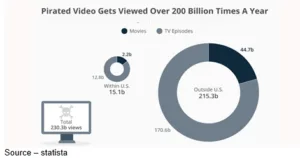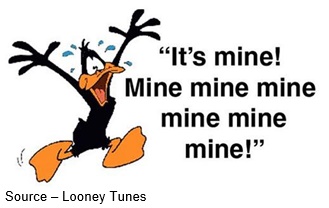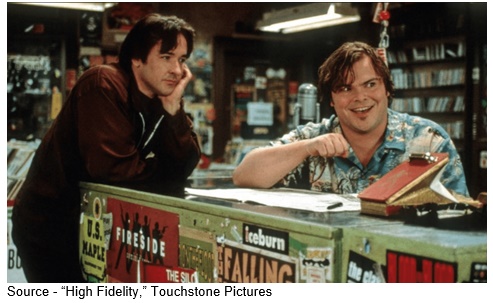Last Sunday evening, we played Twister with our daughter after she complained, “I’m bored and there’s nothing on TV.” Are you kidding me? We have Netflix, Disney +, Amazon Prime, Apple TV +, Hulu, Pluto, Tubi and Peacock streaming to us here in Silicon Valley; and you can’t find anything?
 “I know we don’t have any customers, but I thought that was a bad thing, not like, a business strategy.” — Barry, “High Fidelity,” Touchstone Pictures, 2000
“I know we don’t have any customers, but I thought that was a bad thing, not like, a business strategy.” — Barry, “High Fidelity,” Touchstone Pictures, 2000
You’re not trying!
But we rolled out the Twister mat and went to work climbing, stretching, falling over each other, getting some exercise and having fun. We’re pretty sure we were more agile in “the old days” and despite the fun it sorta’ reminded us of the constantly changing entertainment world with everyone jumping from one circle to be at the right place at the right time.
Back before our daughter could crawl, we had a growing number of TV channels/shows but a single pipeline of distribution and selection. Then the industry started wheeling and dealing; and all of a sudden, we had special stuff and paid-for services like Hulu, Showtime, Starz, Epix and others to expand our viewing options. Content distributors suddenly discovered:
- Consumers had taste and could tell good content from stuff
- People who wanted more than pablum (bland or insipid intellectual matter, entertainment, etc. – editor) would actually pay to watch solid creative work
Life was good; except for the fact that inevitably, the shows you wanted to watch were on at the same time as other good shows so you had to make a choice.
 Keep Checking – The earliest streaming services were more for allowing you to stash your content in their boxes/cloud so you could retrieve them later when you had spare time and nothing to do. Of course, remembering you had saved them for a dull day was difficult.
Keep Checking – The earliest streaming services were more for allowing you to stash your content in their boxes/cloud so you could retrieve them later when you had spare time and nothing to do. Of course, remembering you had saved them for a dull day was difficult.
Fortunately, the Internet emerged and a new streaming service emerged that let you pay-to-store programs you missed to watch later. That streaming was okay but Netflix was tired of mailing you red envelopes and wanted to “give” you a subscription service that BAM! you could watch anytime you wanted on any screen you wanted and … as much as you wanted at one sitting. Viewers liked it so much that Netflix spread around the globe; and today, it has more than 183M subscribers in 190 countries (folks in the other countries probably have Netflix too but …).
Tech & Media Companies Join In
Tech and media companies realized that Netflix CEOs’ Hastings and Sarandos had a good thing going so they set up their own OTT service sites with their own unique, original content for a “reasonable” subscription fee. In no time, consumers around the globe had an embarrassment of rich, anytime/any screen content choices from Amazon, Disney, Apple, NBCUniversal, Hulu, CBS All Access, Pluto, Tubi, Britbox, Alibaba, Tencent Video, Hotstar, Canal +, Joyn, Viu, Stan, Foxtel and hundreds of other streaming SVOD services.
Well, yes, there was a “reasonable” subscription cost with some, but others were ad-supported services to add to enrich your viewing options. AT&T liked the idea, so they went into debt for $85B for WarnerMedia on top of the $67B for DirecTV and then proceeded to improve what they bought by cutting operations, staff. It didn’t take long to make a good thing aahh … better?
To compete more aggressively with NBCUniversal’s Peacock and the other streaming powerhouses, ViacomCBS said enough is enough! It was time to rebrand CBS All Access and show their 16.9M subscribers (and the competition) that they were going all in to become a true international super service. Rolling out early next year; that service will instantly have more than 40,000 TV episodes and movies from Paramount, Nickelodeon, Showtime, BET, Comedy Central, MTV, Nickelodeon and Smithsonian as well as live programming, news, tentpole events, sports, local CBS stations nationwide and CBSN, CBS News and more all for a “reasonable” ($6 with ads, $10 without) monthly subscription.
It will also offer international streaming, focusing on “high value” countries including Australia, Latin America, UK, Nordics, EU and countries to be named later. It has already buffed up its free streaming service Pluto TV and helped it expand the ad-supported stuff to meet the demands of APAC viewers and the desires of folks in the ROW.
“We want to be big in AVOD – Pluto TV has nearly 30M active users in 20+ countries – and we want to be big in SVOD. Those two services I see as completely complementary to each other,”
said ViacomCBS CEO David Lynn.
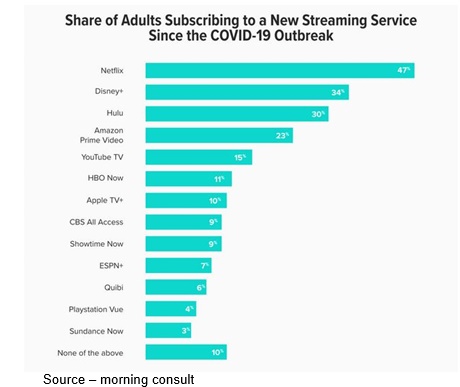 Free Time Content – No one could have forecast that you would suddenly have excess free time on your hands to watch series and movies but when it happened, existing and new streaming services quickly ramped up with their libraries of content to fill in the idle periods. Suddenly, so much content, so much time, so much added expense.
Free Time Content – No one could have forecast that you would suddenly have excess free time on your hands to watch series and movies but when it happened, existing and new streaming services quickly ramped up with their libraries of content to fill in the idle periods. Suddenly, so much content, so much time, so much added expense.
Most of the Pay TV cable bundle companies didn’t really mind that consumers cut, shaved or never had their service because firms like Comcast owned NBCUniversal, Peacock and Sky; and admit it, you did stick with them for their high-speed, reliable Internet service.
“Each streaming service by itself is great,” said Allan McLennan, chief executive of PADEM Media Group. “However, people are getting to the point where they are being overloaded with subscription fee on top of subscription fee, as well as the subscription fee plus pay-per-view for special stuff. It makes them think of the ol’ bait-and-switch marketing of yester-year.”
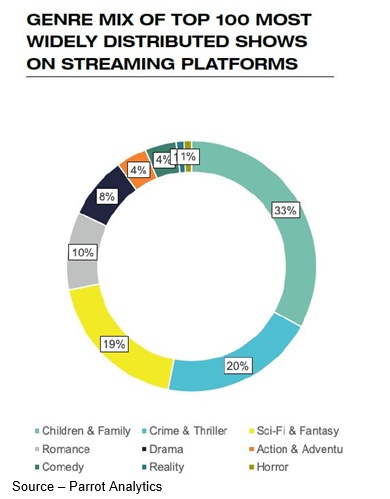 Tastes Vary – Fortunately, not everyone likes the same thing, so studios and content owners have been able to develop a wide range of video story subjects and consumers quickly settled in on the subjects that interested them most.
Tastes Vary – Fortunately, not everyone likes the same thing, so studios and content owners have been able to develop a wide range of video story subjects and consumers quickly settled in on the subjects that interested them most.
“No service has everything an individual or family wants to watch,” he noted. “For example, my wife likes a certain type/set of shows, our son has content he follows as well as game channels and I like specific genres. Trying to find something we all like at the same time is a challenge.
“The same holds true for households around the globe and it can take 10-15 frustrating minutes for someone to find something they want to watch or settle on watching,” he added. “People are questioning their subscription budget and the real value of all of the great content selection,” he continued. “They’re yearning for a single content source solution but without the restrictive long-term contract.”
It’s Getting More Expensive
According to GlobalWebIndex, 36 percent of the respondents said their growing list of streaming services is getting too expensive. Twenty-eight percent of UK and US users expressed frustration with the need for multiple services to access the content they want to watch. People have discovered they have to subscribe to four, five or more SVOD services just to assemble their own personalized content bundle.
If the consumer is at their budget maximum and alerted to a new “gotta see” set of movies/TV series, they cancel their least-used service and add the new, more interesting service that better fits their needs. All of the streaming services are focusing on grabbing the other guy’s subscribers, creating churn in the existing streamer pond rather than developing long-term, increasingly profitable consumer relationships.
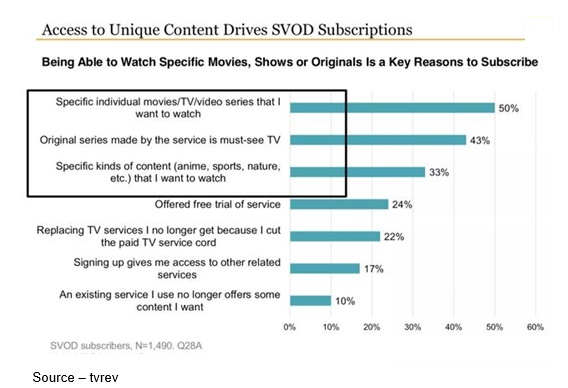 Good Stuff – It didn’t take consumers long to learn they could pick and choose so they could watch just the actors, just the story genres and just the subjects that interested them most. The only problem was that they weren’t all in one location but spread across the entertainment ecosystem.
Good Stuff – It didn’t take consumers long to learn they could pick and choose so they could watch just the actors, just the story genres and just the subjects that interested them most. The only problem was that they weren’t all in one location but spread across the entertainment ecosystem.
Because of the explosion of content and the explosion of services, consumers are increasingly suffering from an explosion of confusion.
“With more than 300 SVOD platforms in the US and 1000s globally, consumers are getting tired of navigating between multiple services to find the specific content they want to watch,” McLennan said. “People are finding they have to weigh the intangible of what content in service A is worth to them compared to the content on service B.
“When the entertainment value shifts, consumers leave,” he added. “Every business owner will tell you it costs more to sign a new customer than keep an existing customer and that it’s difficult and expensive to win that customer back.
“No content creator/producer wants that,” he exclaimed. “And no consumer really wants to go back to their old cable bundle. What people do want a well-executed aggregated, single-sourced solution that delivers a very wide range of content choices that will present intelligent content recommendations with a single front end and stable user experience.”
The “new” CBS super service seems to be a move in the right direction.
Could SmartTV or Dongles Be the Answer?
SmartTVs from firms like Sony, LG and Samsung as well as vMVPD solutions such as Roku and Apple TV could potentially provide the single-source service consumers want without the binding service contract.
“Depending on your personal interpretation, we’re on the cusp of the third or fourth wave of broadcast/entertainment growth,” McLennan said. “We’re entering the new golden age of content that could provide each viewer their own television experience … an empowering moment societally.”
The ultimate solution is a single source that can quickly search global, regional or local genres – depending on an individual’s licensing/fee agreement – and deliver just the content you want, when you want it, to the device you’re looking at at that specific time. We understand that such a complex, comprehensive solution is quite a ways off because it will require an intelligent platform that will know confidentially the individual consumer as well as the service’s ability to understand and deliver entertainment regardless of the influence of the creator/owner. The personalized content service would require a robust amount of AI that would know or anticipate what the viewer wanted to see, depending upon a wide range of personal data.
“We are close to having the technology to sync up with and deliver the right content along with production/distribution needs to enhance and expand the availability of super aggregators – services and devices,” McLennan said. “The sooner we get there, the sooner we can eliminate or minimize expensive customer turnover to benefit all segments of the ecosystem.”
Too Much Free – Pirated TV episodes and movies are often viewed as free, victimless crimes or harmless distractions rather than stealing the creative work of hard-working people, so no big deal. But it is harmful and it’s stealing. More importantly, we believe the move will be an important step in removing the industry’s massive overhead cost caused by content piracy. We’re really fed up with people – primarily academics or pirates themselves – justifying the hundreds video pirate sites like Pirate Bay and BitTorrent as being “good for the industry.” For example, the most recent was a University of Georgia study released in Management Science that piracy actually improves viewership (they also included theater ticket sales but that’s too far in the future to even think about).
Let’s lay our cards on the table regarding piracy … it’s not a victimless crime!
Video content piracy – something for nothing – has been around forever. People snuck 8mm cameras into theaters to shoot crappy content off the screen. Studio people “borrowed” master prints. Folks griped about expensive cable bundles and the need to pay for the hundreds of channels to get the few they really wanted to see.
IP-based streaming “eased” the pirate demand until “everyone” got into the act offering their service for $5-$15 plus subscriptions and suddenly the overload complaint returned. In addition, streaming made it remarkably easy for pirates to divert excellent quality content to their torrent sites and offer a “better” subscription service at a very reasonable fee.
Since pirate viewing was running rampant, some folks liked to tout the volumes of “free” views as a hint as to the project’s success:
- The first episode of season seven of Game of Thrones was pirated 91.74M times and the season accumulated more than 1B illegal downloads a week after it ended.
- Disney’s Mandalorian was pirated three hours after the first segment release and quickly became the most pirated TV show – at that time.
- While Netflix’ Hastings called sleep the streaming service’s leading competitor, freeloaders cost the company an estimated $192M in monthly revenues.
According to anti-piracy experts at Nagra, illegal piracy costs the US industry more than $1B a year. Their joint report with Digital Citizens Alliance noted:
- An estimated 9 million fixed broadband subscribers in the U.S. use a pirate subscription IPTV service.
- The $1B industry is even larger because it includes the sale of pirate streaming devices as well as ad-financed piracy.
- Since they don’t pay for programming, their profit margins are between 56 percent (retailers) to 85 percent (wholesalers).
- The ecosystem relies on legitimate players to exist including hosting services, payment processors and social media.
- Pirate sites partner with malware hackers that steal/use personal and financial data, use individuals’ systems for cryptocurrency mining, adware, ransomware, DoS botnet attacks.
We understand the frustration consumers have with:
- Favorite content suddenly being pulled from their subscription service to another service they don’t subscribe to.
- Really great shows, content available in certain countries – especially if one of them is “just across the road” because of governmental “limitations.”
But is the potential indirect cost to the consumer worth it?
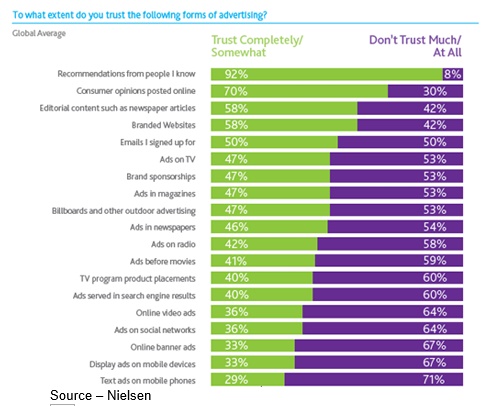 Marketing Expense – Academics like to carry on extensive research and arrive at the conclusion that makes sense to them. Piracy is just another form of advertising—unless, of course, you’re enjoying their content without paying them. Then, it’s different.
Marketing Expense – Academics like to carry on extensive research and arrive at the conclusion that makes sense to them. Piracy is just another form of advertising—unless, of course, you’re enjoying their content without paying them. Then, it’s different.
The U of G academics and others (including studio/service heads who want to minimize the loss to non-thinking stockholders) like to picture piracy as a marketing expense to prove the value of the content and stimulate WOM advertising to attract more paying viewers.
Are you outta your mind?
Piracy is an “inconvenience” for companies like Netflix, Hulu, Peacock, Disney+, Apple TV+, Amazon Prime Video, CBS All Access, Hotstar, Sky, Tencent, Alibaba and hundreds of streaming services around the globe. Those illegal activities mean profits have been siphoned off the content creators, studios and distributors’ bottom line.
That means they don’t have added money to invest in new, different, more exciting, more enjoyable video content that is produced by tens of thousands of independent creative pros – writers, producers, directors, shooters, editors, audio engineers, boom operators, grips, FX, stunt, animators and more – who use their expertise to give people more visual stories. We realize the pirates don’t care and consumers really like the free stuff those folks have liberated for them. But money feeds the ecosystem that creates new, different, interesting content. Without it, the ecosystem dries up and you’re left with TikTok or YouTube stuff to watch.
Or, you’ll end up playing Twister with us; and we warn you, we’ve really gotten good at it … again.
Then you’ll have to reluctantly agree with Rob in High Fidelity when he said, “You know, it sounds boring, but it wasn’t. It wasn’t spectacular either. It was just good. But really good.”
# # #
Andy Marken – [email protected] – is an author of more than 700 articles on management, marketing, communications and industry trends in media & entertainment, as well as consumer electronics, software and applications. An internationally recognized marketing/communications consultant with a broad range of technical and industry expertise in storage, storage management and film/video production fields; he has an extended range of relationships with business, industry trade press, online media and industry analysts/consultants.

